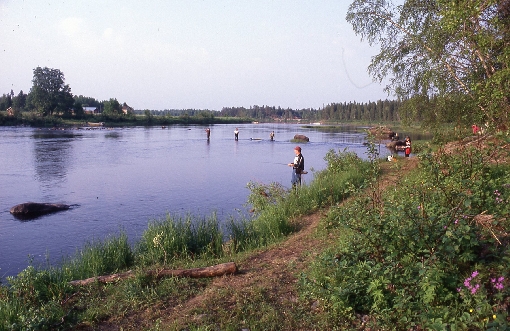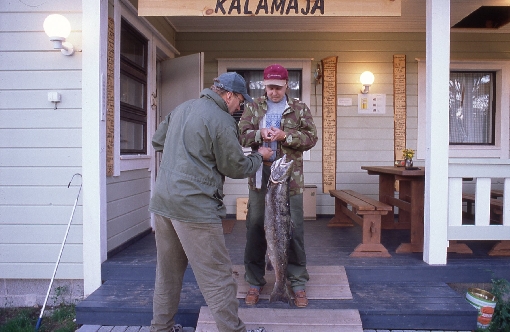River Simojoki - salmon river of suitable size
River Simojoki, emptying into the bottom of the Gulf of Bothnia, is one of the very few Finnish salmon rivers that has remained unharnessed. Starting from Lake Simojärvi in Ranua, the river is of ‘quite a suitable size’ to manage by casting from the banks or while wading.Its average width is about 60 to 100 metres and its depth is such that there are places where it is possible to wade across the rapids, especially when the waters are low. The colour of the water is brown. Over its almost 200-kilometre journey, River Simojoki covers dozens of mostly fairly gentle rapids with open banks and fishing for salmon concentrates on the lowest 50 kilometres. Popular salmon-fishing sites include the Suukoski, Mertakoski, Pyttykoski, Vääräkoski, Kattilakoski, Saukkokoski, Hömmönkoski, Hanskankoski and Harrikoski Rapids, which are all within relatively easy reach from the roads following the river on both sides. Photo: Jari Tuiskunen  On the lower reaches of River Simojoki the peak salmon fishing period often falls around Midsummer.
Early summer best season Salmon start their spawning migration up River Simojoki at the end of May and the peak period often falls around Midsummer. Therefore, early summer is by far the best time to catch a salmon on the end of the line – the average weight is 3–6 kilos, but if you are lucky, you may even catch a specimen weighing over 10 kilos. The migration peters out when the waters warm up and recede in July, just to resume with less intensity as the waters start to cool down again in the autumn. The migration is monitored using an echo sounder installed in the rapids, which has made it possible to spot annual migration volumes of about 500–3,000 specimens. In other words, catching a salmon in River Simojoki is not all that easy even on a good day, but the odds are improved by the lower pressure from fishing when compared with other salmon rivers. It’s worth trying with flies and lures in red, orange and yellow shades, without forgetting to bring muted ones as well. Photo: Jari Tuiskunen  River Simo salmon. When salmon-fishing doesn’t work out, it’s worth trying to catch some grayling, which are common throughout the river. Large specimens are rare, but you may very well break the 40-cm limit. Dry flies and caddis fly larvae and pupae work in pursuit of grayling. Furthermore, you stand a decent chance of catching brown trout from Lake Simojärvi in the river, especially in its upper reaches. Naturally, the stocks of species found here also include pike, perch and various cyprinids. |